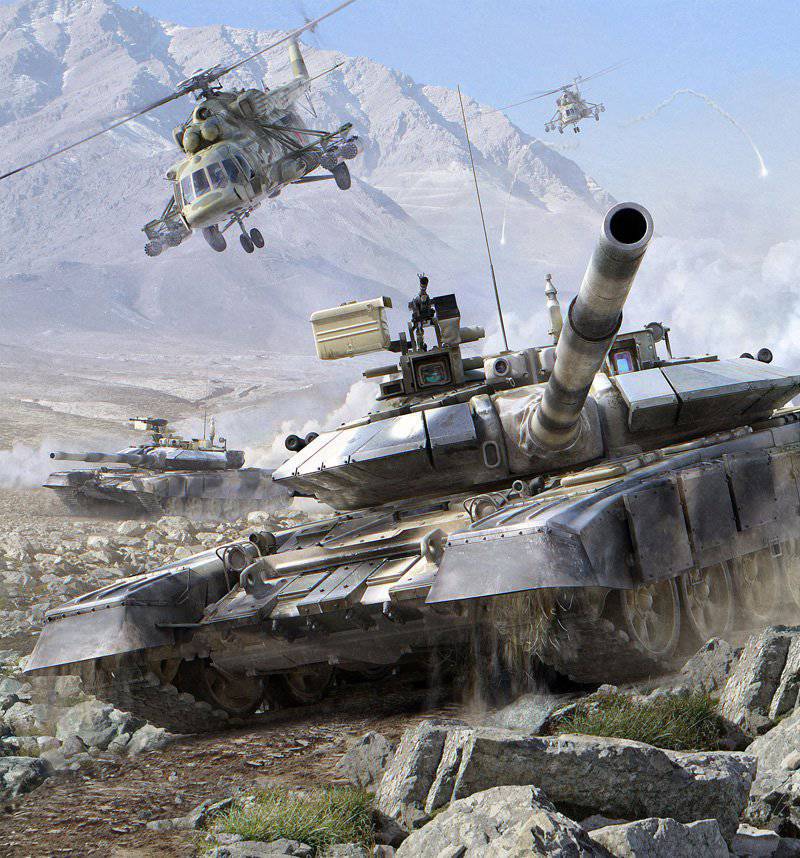A prominent expert ruled off the costly armaments program until 2020, which Putin is proud of

The ambitious state armaments program up to 2020 of the year, which will cost the Russian budget huge 20 trillions of rubles - the amount that it was “scary to say” to Vladimir Putin himself is unbalanced, almost unrealistic and subject to significant reductions. So says a prominent Russian expert in defense industry and military-technical cooperation, Mikhail Barabanov. Under his leadership, the English-language magazine Moscow Defense Brief, one of the publications of the Center for the Analysis of Strategies and Technologies, is published.
In his analysis of the program in Vedomosti, Drums immediately describes the main signs of its inferiority and even harm to the country's economy. Firstly, it is focused on the rapid growth of procurement and defense expenditures as a whole, which is clearly ahead of Russia's economic growth rates and the real growth rates of the Russian budget. Secondly, the program contains overly optimistic price parameters for products purchased under the state defense order. Finally, thirdly, the program is based on overly optimistic timing of the launch into mass production of new types of weapons.
According to the expert, the implementation of the HPV-2020 assumes a completely unrealistic growth rate of Russia's GDP. According to his simple calculations, with the level of military spending that is incorporated in the program, in the 2020 year, the GDP should be approximately 150 trillion rubles, that is, double the GDP of the year 2014. This perspective is clearly a utopia, he argues.
The defense spending system itself does not hold water. First of all, there is a clear bias in favor of purchases of weapons and equipment, including to the detriment of personnel costs. But it is precisely the question of personnel today that is central to the Russian Armed Forces, emphasizes Mikhail Barabanov.
In his opinion, it would be right to put the main task of creating an army of more than 600-700 thousand people with the fastest possible transition to recruitment under a contract. The authorities discourage a lack of financial resources, but they could appear due to cutting back on an extremely expensive armament program, the analyst is convinced.
Obviously superfluous Drums considers the major costs of the fleet. Russia is a land power, but in the LG-2020 for equipment and weapons for the Navy provides almost twice as many funds (about 5 trillion rubles) than for equipment and weapons of the Ground and Airborne Forces (total 2,6 trillion rubles).
To the list of potential cuts naval The costs proposed by the author include any aircraft manufacturing programs, including the Mistral project, which, according to the expert, must be completely abandoned. However, since the construction of the first two amphibious assault ships-docks is already underway in France, and the refusal will cost Russia even more than fulfilling the contract, Barabanov proposes to unconditionally abandon the construction of the next two, already in Russia. At the same time, as a reserve for the future, he considers it necessary to retain the domestic heavy aircraft-carrying cruiser "Admiral of the Fleet of the Soviet Union Kuznetsov" in the Navy.
The Mistral contract, signed under Anatoly Serdyukov, has been scolded a long time ago, but already after the change of leadership of the Ministry of Defense, a truly powerful wave of criticism has risen. One of the sharpest was the January statement by the first deputy head of the Military Industrial Commission under the Russian government, Ivan Kharchenko: he called the purchase of these ships "an absurd initiative" that "caused damage to the industry and the state."
In December, 2012, it was reported that it was allegedly decided to abandon the third and fourth Mistral helicopter carriers, which were to be built already in Russian shipyards. However, a source in the defense ministry then explained that there was no question of a refusal: just the start of construction, which was planned for 2013, is transferred to 2016. And this year, Deputy Prime Minister Dmitry Rogozin said that the issue of building the third and fourth ships in Russia "will be resolved based on the results of operating the first two ships assembled in French shipyards."
However, there is something to reduce, albeit slightly, in terms of costs for the Ground Forces. So, the expert recommends abandoning the purchase of the most expensive samples until 2020 - tanks program Armata, infantry fighting vehicles of the Kurganets-25 series and heavy self-propelled artillery. They promise to supply them from 2015, but they must be worked out during military trials, and such games take good time for more than one year. So within the framework of the current program, development is unlikely to be completed, the analyst points out.
Finally, with regard to the Strategic Missile Forces, Mikhail Barabanov doubts the need to develop a new liquid intercontinental ballistic missile. The relatively cheap ground-based intercontinental ballistic missiles "Yars" can fully maintain the level of Russia's strategic nuclear forces.
By the way, in the first half of February, the press reported that because of plans to build a new rocket in Moscow, the US’s proposal to go for a new reciprocal reduction of nuclear arsenals was cool. In Russia, fear of indignation of the military and representatives of the military-industrial complex, who have already promised money to create a rocket.
Information